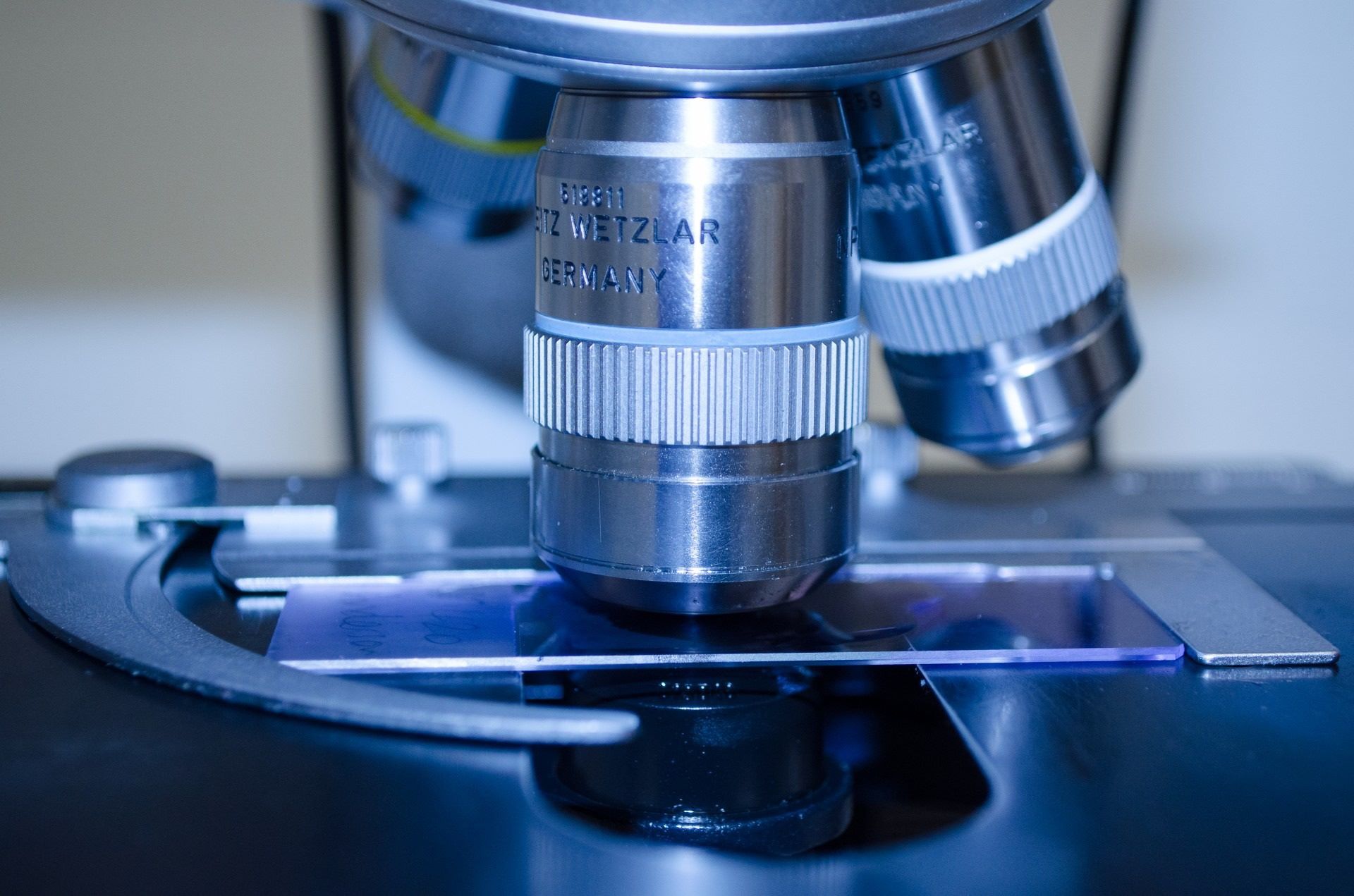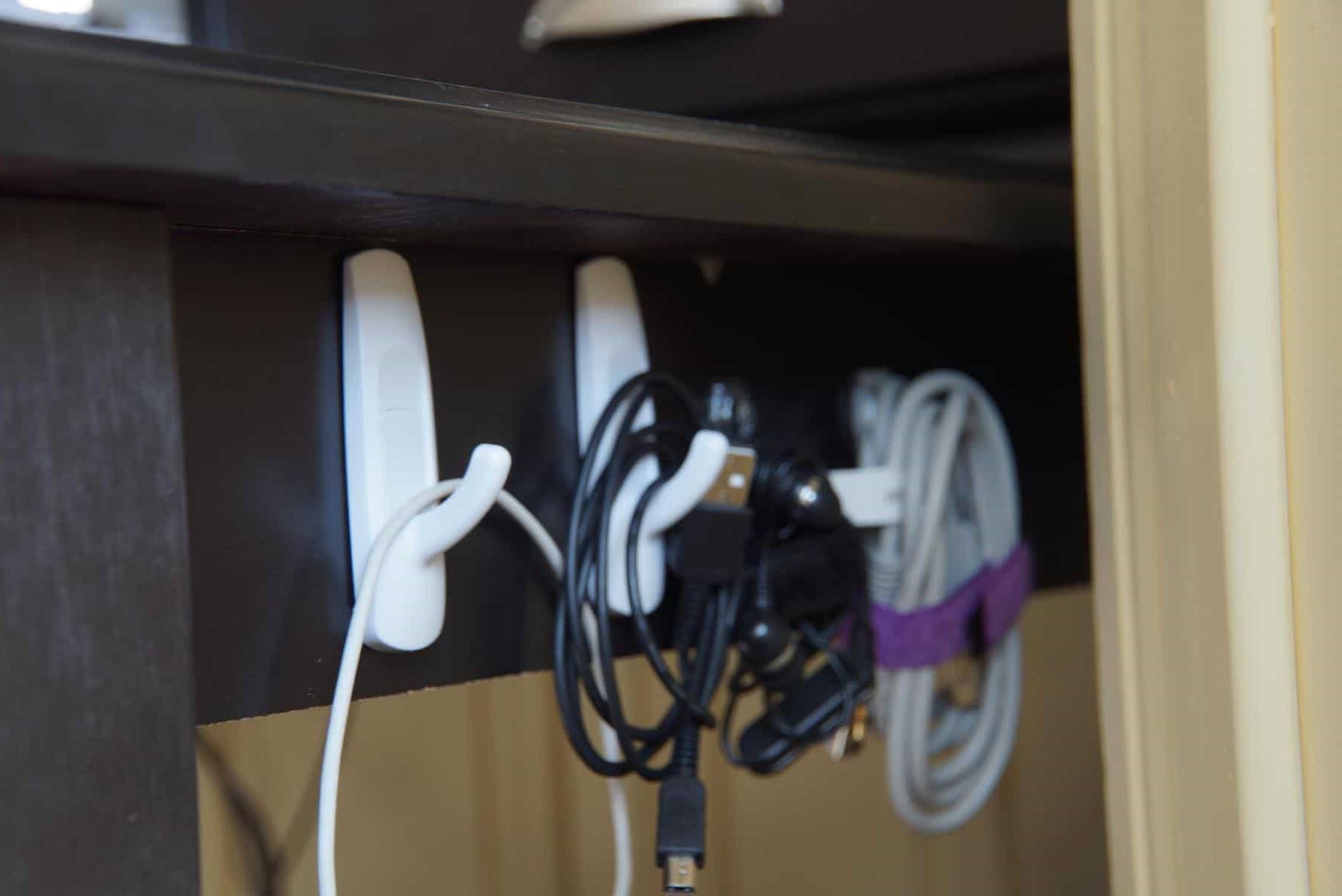Home>Home Appliances>Other Appliances>How To Organize Lab Notebook


Other Appliances
How To Organize Lab Notebook
Published: March 2, 2024
Learn how to efficiently organize your lab notebook and keep track of your experiments and observations with our expert tips and techniques for other appliances. Streamline your research process and stay organized.
(Many of the links in this article redirect to a specific reviewed product. Your purchase of these products through affiliate links helps to generate commission for Storables.com, at no extra cost. Learn more)
Introduction
Are you tired of flipping through pages of your lab notebook, trying to find that one crucial piece of information? Organizing your lab notebook is essential for keeping track of your experiments, observations, and data. In this article, we'll explore the importance of keeping a well-organized lab notebook and provide you with practical tips on how to set it up and maintain it effectively. Whether you're a scientist, researcher, or student, having a well-organized lab notebook can save you time and frustration in the long run. So, let's dive in and learn how to streamline your note-taking process!
Key Takeaways:
- Keep a well-organized lab notebook to protect your ideas, maintain data integrity, and support scientific progress. Choose the right notebook, set it up effectively, and organize entries for clarity and accessibility.
- Maintain your lab notebook by updating it regularly, ensuring neatness, and storing it securely. Follow guidelines, seek feedback, and continuously improve your organization methods for effective scientific documentation.
Read more: How To Organize A Notebook
Importance of Keeping a Lab Notebook
Keeping a lab notebook is crucial for several reasons. Here's why it's so important:
-
Legal Protection: In the scientific and research fields, a lab notebook serves as a legal document to establish ownership of ideas, discoveries, and inventions. It provides a record of your work, which can be used to support patent applications and defend against intellectual property disputes.
-
Data Integrity: A well-maintained lab notebook ensures the integrity of your data. It allows you to document your experiments, observations, and results in a systematic and chronological manner, providing a clear trail of your scientific journey.
-
Replicability of Experiments: Other researchers should be able to replicate your experiments based on the information in your lab notebook. This is essential for the validation of scientific findings and the advancement of knowledge in your field.
-
Personal Reference: Your lab notebook serves as a personal reference for your work. It helps you keep track of your progress, learn from past mistakes, and build on previous successes.
-
Accountability and Transparency: A well-organized lab notebook demonstrates accountability and transparency in your research. It shows that you have followed ethical practices and allows others to review and verify your work.
In summary, a well-kept lab notebook is not just a record of your work; it's a legal document, a scientific tool, and a personal reference that plays a crucial role in the integrity and progress of scientific research.
Choosing the Right Notebook
When it comes to choosing the right notebook for your lab work, there are several factors to consider. Here's what you should keep in mind:
-
Durability: Look for a notebook with a durable cover and pages that can withstand the rigors of a laboratory environment. Consider options with waterproof or chemical-resistant covers to protect your notes from spills and splashes.
-
Page Format: Consider the type of page format that best suits your needs. Some notebooks have grid or dot grid pages, which are ideal for sketching diagrams and graphs, while others have ruled pages for written notes. Choose a format that complements your note-taking style and the type of data you'll be recording.
-
Binding: The binding of the notebook is crucial for long-term use. Spiral-bound notebooks allow for easy page flipping and laying flat on the lab bench, while sewn or stitched bindings offer durability and a professional look.
-
Size: Consider the size of the notebook that will best accommodate your note-taking needs. A larger notebook provides ample space for detailed entries and diagrams, while a smaller, more portable option may be suitable for fieldwork or on-the-go note-taking.
-
Special Features: Some notebooks come with special features such as numbered pages, table of contents, or detachable sheets. These features can enhance organization and accessibility of your notes.
-
Paper Quality: The quality of the paper is essential to prevent ink bleeding and smudging. Look for notebooks with high-quality, acid-free paper that is suitable for writing and sketching with various pens and markers.
By considering these factors, you can select a notebook that aligns with your specific lab work requirements, ensuring that your notes are well-protected and organized throughout your scientific endeavors.
Setting Up Your Notebook
Setting up your lab notebook is the first step towards creating an organized and efficient system for recording your scientific endeavors. Here's how to set up your notebook for success:
Choose a Title and Label
Start by giving your notebook a clear and descriptive title on the cover. This title should reflect the purpose or focus of the notebook, making it easy to identify among your other lab materials. Additionally, label the spine of the notebook with the title for quick identification when stored on a shelf.
Read more: How To Organize A Lab
Create a Table of Contents
Allocate the first few pages of your notebook for a table of contents. As you make entries, record the page numbers and a brief description of each entry in the table of contents. This will serve as a roadmap for locating specific information within your notebook quickly.
Number the Pages
Numbering the pages of your notebook consecutively is essential for maintaining order and reference. This sequential numbering allows you to cross-reference information and easily locate specific entries. Many notebooks come pre-numbered, but if yours does not, take the time to number the pages yourself.
Establish a Key
Devise a key or legend that outlines the symbols, colors, or abbreviations you plan to use in your notebook. This key will help maintain consistency in your note-taking and make it easier to interpret your entries at a glance. For example, you might use specific symbols to denote different types of experiments or observations.
Set Up Sections
If your research involves different projects, experiments, or subjects, consider dividing your notebook into sections. Use labeled tabs or dividers to create distinct sections for each topic, making it simpler to navigate through your notes and locate specific information.
Read more: How To Use A Fire Blanket In A Lab
Incorporate a Date and Time Format
Establish a consistent format for recording dates and times in your entries. Whether you use a standard date format (e.g., MM/DD/YYYY) or a specific timestamp format, ensure that it is clear and easy to understand. Consistent dating and timing will help you track the progression of your work accurately.
By following these steps to set up your lab notebook, you can create a well-organized and accessible system for recording your scientific work. This initial preparation will lay the foundation for efficient note-taking and streamlined organization throughout your research journey.
Organizing Your Entries
Organizing your entries in a systematic and logical manner is essential for maintaining clarity and accessibility within your lab notebook. Here's how to effectively organize your entries:
Use Descriptive Headings
Begin each entry with a descriptive heading that summarizes the content of the entry. Clear and informative headings make it easier to scan through your notebook and locate specific information quickly. Whether it's an experiment title, a research question, or an observation heading, ensure that it effectively encapsulates the content that follows.
Employ a Consistent Format
Consistency in your note-taking format is key to maintaining organization. Whether you prefer bullet points, numbered lists, or paragraphs, stick to a consistent format throughout your entries. This uniformity makes your entries easier to read and comprehend, especially when revisiting them at a later date.
Read more: What Are Lab Countertops Made Of
Utilize Visual Aids
Incorporate visual aids such as diagrams, charts, and graphs to supplement your written entries. Visual representations of data and observations can enhance the understanding of your work and provide a quick reference for complex information. Ensure that these visual aids are labeled and referenced appropriately within your entries.
Cross-Reference Related Entries
When a new entry relates to or builds upon a previous one, make cross-references within your notebook. Use page numbers or entry titles to link related content, creating a cohesive narrative of your scientific progress. This practice helps you trace the development of ideas and experiments throughout your notebook.
Employ Color-Coding and Highlighting
Consider using color-coding and highlighting to categorize and emphasize specific types of information within your entries. For example, you might use different colors to distinguish between different types of experiments, observations, or data analysis. This visual distinction aids in quickly identifying and differentiating content.
Include Supporting Documentation
Attach any relevant supporting documentation, such as printouts, photographs, or data sheets, to your notebook entries. This additional material provides context and evidence for your recorded work, creating a comprehensive record of your scientific activities. Ensure that these documents are securely affixed and referenced within the corresponding entries.
Read also: 9 Incredible Lab Freezer For 2024
Review and Edit Regularly
Set aside time for regular review and editing of your entries. This practice allows you to refine your notes, correct any errors, and ensure that your entries remain coherent and accurate. Regular review also helps you identify any missing information or follow-up actions needed for specific entries.
By implementing these strategies for organizing your entries, you can create a well-structured and navigable lab notebook that effectively captures and communicates your scientific endeavors. This organized approach enhances the utility and value of your notebook as a comprehensive record of your research activities.
Maintaining Your Notebook
Maintaining your lab notebook is an ongoing process that requires consistent attention and care to ensure its effectiveness and reliability. Here are essential practices for maintaining your notebook:
Regular Updates
Make it a habit to update your lab notebook regularly. Whether it's at the end of each day or after completing a significant experiment, timely updates ensure that your notebook remains current and reflective of your progress.
Neatness and Clarity
Maintain neat and legible entries in your notebook. Clear handwriting, proper labeling, and organized layouts contribute to the overall clarity of your notes. Avoid overcrowding pages and strive for a visually appealing and comprehensible presentation.
Secure Storage
Store your lab notebook in a secure and accessible location. Protect it from environmental hazards such as moisture, direct sunlight, and extreme temperatures. Consider using a designated shelf or cabinet in the laboratory for safekeeping.
Backups and Duplicates
Consider creating backups or duplicates of your lab notebook. Whether through digital scans or physical copies, having duplicates safeguards your data against loss or damage. Store digital backups securely and ensure they are regularly updated.
Data Integrity
Maintain the integrity of your data by avoiding alterations or erasures in your notebook. If corrections are necessary, clearly indicate them with a single line through the original entry, along with the corrected information and your initials and date.
Regular Audits
Conduct periodic audits of your lab notebook to ensure completeness and accuracy. Reviewing your entries allows you to identify any gaps, inconsistencies, or areas that require further elaboration.
Read more: What Is A First Aid Kit Used For In A Lab
Adherence to Guidelines
Adhere to any specific guidelines or regulations regarding lab notebook maintenance set forth by your institution or research facility. Compliance with established protocols ensures that your notebook meets the necessary standards for scientific documentation.
Collaboration and Communication
If you are working in a team or collaborative research environment, communicate and coordinate with your colleagues regarding the maintenance and access of shared lab notebooks. Establish clear guidelines for entries, updates, and data sharing.
Continuous Improvement
Strive for continuous improvement in maintaining your lab notebook. Seek feedback from mentors, peers, or supervisors to enhance the quality and effectiveness of your note-taking practices.
By consistently maintaining your lab notebook through these practices, you can uphold the integrity, accessibility, and reliability of your scientific documentation, contributing to the overall success of your research endeavors.
Tips for Effective Organization
-
Consistent Review: Regularly review and organize your lab notebook to ensure that entries are up to date and well-structured. This practice helps in identifying any inconsistencies or missing information, allowing for timely corrections and updates.
-
Utilize Sticky Notes and Tabs: Incorporate sticky notes and tabs to mark important sections or entries in your notebook. This makes it easier to locate specific information and provides a quick reference for essential details.
-
Digital Backups: Consider creating digital backups of your lab notebook. Scanning or digitizing your notes ensures that you have an additional copy stored electronically, offering protection against physical damage or loss.
-
Color-Coded Sections: If your notebook contains multiple sections or projects, use color-coded tabs or dividers to distinguish between them. This visual organization facilitates quick navigation and retrieval of information.
-
Archive Old Entries: As your notebook fills up, consider archiving older entries to maintain the relevance and accessibility of current data. Archiving older content prevents clutter and streamlines the retrieval of recent information.
-
Standardize Data Entry: Establish a standardized format for data entry, including consistent date and time formats, units of measurement, and notation conventions. This uniformity enhances the clarity and coherence of your entries.
-
Create an Index: Develop an index at the beginning or end of your notebook to catalog specific topics, experiments, or projects. This index serves as a comprehensive reference for locating relevant information within your notebook.
-
Utilize Digital Tools: Explore digital tools and software for organizing and managing your lab notebook. Digital platforms offer features for categorizing, searching, and annotating entries, enhancing the efficiency of organization.
-
Regular Maintenance: Dedicate time for regular maintenance and organization of your notebook. This includes tidying up entries, updating the table of contents, and ensuring that all sections are appropriately labeled and referenced.
-
Seek Feedback: Share your organization methods with colleagues or mentors and seek feedback on improving the structure and accessibility of your lab notebook. External perspectives can offer valuable insights for enhancing organization.
By implementing these tips for effective organization, you can optimize the structure and accessibility of your lab notebook, ensuring that it remains a valuable and organized resource for your scientific work.
Frequently Asked Questions about How To Organize Lab Notebook
Was this page helpful?
At Storables.com, we guarantee accurate and reliable information. Our content, validated by Expert Board Contributors, is crafted following stringent Editorial Policies. We're committed to providing you with well-researched, expert-backed insights for all your informational needs.










0 thoughts on “How To Organize Lab Notebook”